Arthrosis is a chronic joint disease in which the cartilage of the joint is increasingly destroyed.When the cartilage is destroyed, changes arise in the bone that the cartilage covers, and in the joint capsule.However, this description is not entirely precise, since there are some inflammatory changes in the case of osteoarthritis in the joint.In the English -speaking countries "our" arthrosis is in most cases referred to as arthritis (arthrithis), i.e.H. Inflammatory joint diseases (itis suffix), while we are normally referred to as arthritis, joint damage in rheumatic diseases, infectious, purulent damage to the common damage, etc.
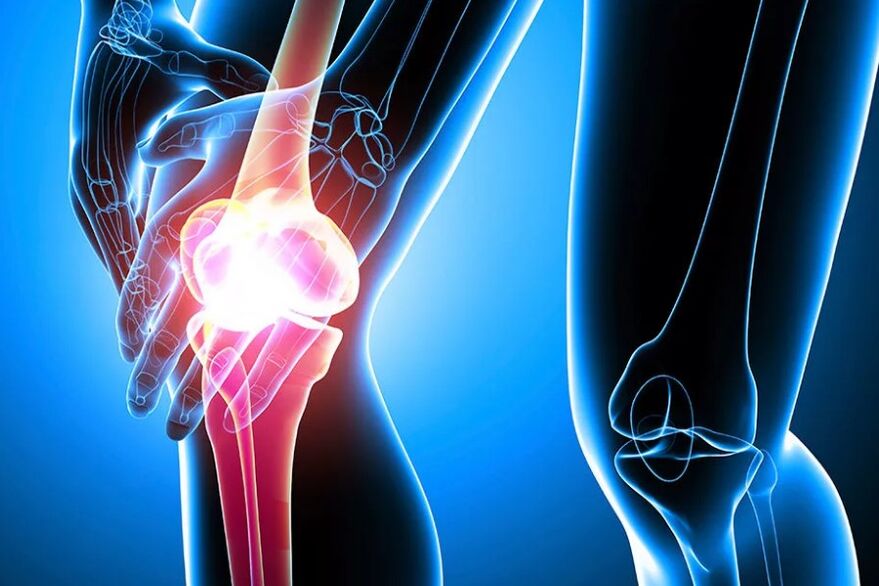
In modern scientific articles, the term osteoarthrosis is found more often (from the Greek words "osteo" bones, "arthros".H. not anti -inflammatory disease of the joint and bone).And in the English -speaking countries, "our" osose arthrosis is also referred to osteoarthritis (Ostheoarthrithis).H. Inflammatory disease of the joint and bone.
We often hear the question of patients: "First of all, osteoarthritis was diagnosed to me, and now arthrosis is already writing. Is it really that bad?"In fact, arthrosis and arthritis are synonyms, and their doctors spoke about the same.
As we already found with arthrosis (osteoarthrosis) at the beginning, the cartilage is increasingly destroyed and the bones are gradually included in the process.In the case of osteoarthritis in the bone, a section of the sclerosis (compression) first occurs, which is due to the loss of shock absorption properties.Then there are showing along the bone edges (exostosis), which are often incorrectly called "
Salze Deposit
"- In fact, there are no salts from salts with ordinary osteoarthritis.With another course of the disease, the bone begins to bend, deform, cysts form in it: often the disease is called " - Tatsächlich gibt es mit gewöhnlicher Arthrose keine Salze von Salzen. Mit einem weiteren Krankheitsverlauf beginnt sich der Knochen zu beugen, zu verformen, Zysten bilden sich darin: Oft wird die Krankheit genanntDeformation arthrosis (osteoarthrosis).In old medical books you can sometimes find the expression "distortion arthrosis", but now it is almost never used.
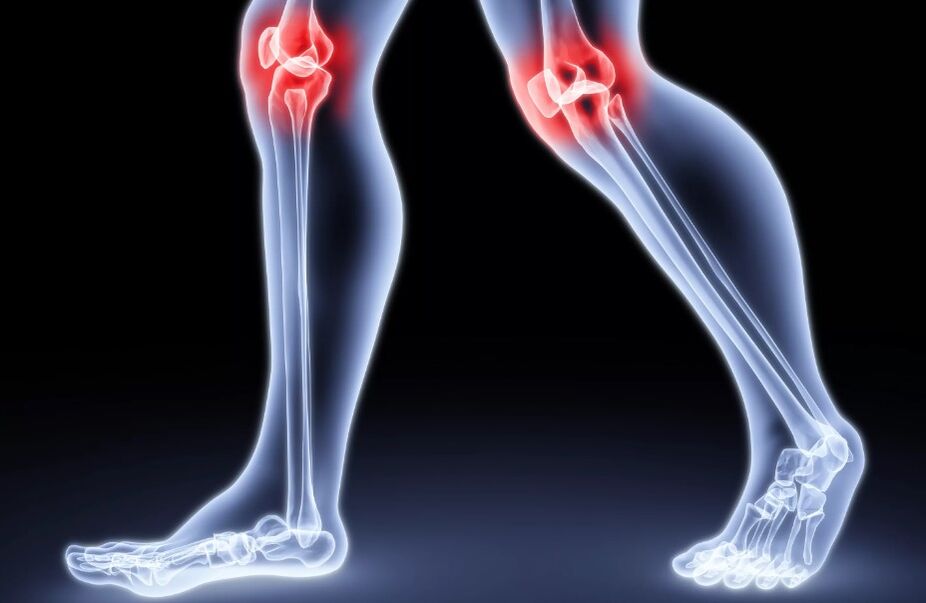
The exact causes of the development of osteoarthritis have been considered unknown for a long time, so there is a different name for this disease - Idiopathic arthrosis , i.e. arthrosis, which has arisen for unknown reasons or spontaneously.Of course, scientists no longer consider a secret and the reasons for their development are known.More about the causes of osteoarthritis, the primary and secondary arthrosis below.
Osteoarthritis often affects the joints that have maximum loads (hip, knee, ankle joint, hand joints).Osteoarthritis of the hip joint is called coxarthrosis (from the word "Coxa" - hip), the ankle joint - crurosteoarthritis ("cruuris" - lower leg), knee - knee - crurosteoarthritis ("cruuris" - lower leg). Gonarthrosis ("Gen" knee).In most cases, arthrosis affects both knee joints, while one of the joints can be destroyed more.In this case, the diagnosis of bilateral gonarthrosis with a predominant damage to the right (or left) knee joint sounds.
Often, not one, but several joints are affected by osteoarthritis so that you use a different term - Polyosteoarthrosis This means the defeat of three or more joints (two symmetrical, for example both knees and others).In this case, the diagnosis usually sounds as follows: Polyosteoarthrosis with a predominant damage to the knee joints (or one of them).
Why does an arthrosis of the knee joint occur?
The osteoarthritis of the knee joint is different.Depending on the causes of the occurrence, primary and secondary arthrosis is differentiated.
Primary arthrosis of the knee joint
The articular cartilage is constantly destroyed and updated, and these processes are usually compensated for.Age slows down the cartilage and the destruction of the cartilage, which is referred to as the process of deterioration or degeneration, begins to determine.
The process of synthesis and destruction of the cartilage is usually compensated for.When a degeneration prevails, the arthrosis of the knee joint begins
In most cases, the degeneration of the cartilage takes place, i.e. the development of osteoarthritis, after 45-50 years, but sometimes osteoarthritis can develop in 20 years.Fortunately, the development of osteoarthritis is extremely rare at the age of young.If osteoarthritis occurs, then at the age of 40 to 60 years, and if there is no arthrosis at the age of 60, it will most likely be no more or rather osteoarthritis (certain degenerative changes in the knee connection are present in all older people, but are expressed differently).But not all of them feel their knees problematic.This applies in particular to men who often shows "serious" osteoarthritis or causes minimal inconvenience.
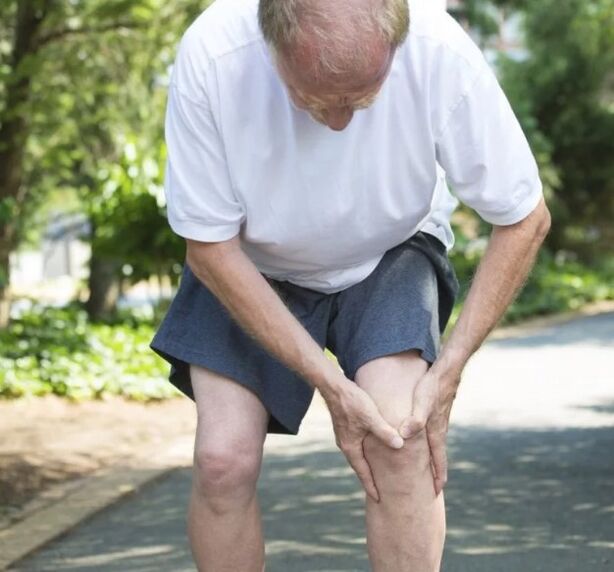
Primary arthrosis occurs spontaneously, d.H. without the introduction of factors, so it is described as idiopathic that we used to talk about.
So we have already found that the age is one of the main factors that determine the development of osteoarthritis because the processes of cartilage regeneration prevail with age.Every fourth person over 55 years suffers from the knee joints from osteoarthritis.However, we have also found that at age, arthrosis develops for everyone.So there are other reasons.Before we list it, we find that there is no main reason.The arthrosis of the knee joint develops in relation to causes, while some play a major role, while others - less.
Wir haben also bereits festgestellt, dass das Alter einer der Hauptfaktoren ist, die die Entwicklung von Arthrose bestimmen, da sich die Prozesse der Knorpeldegeneration mit dem Alter durchsetzen. Jeder vierte Mensch über 55 Jahre leidet unter Arthrose der Kniegelenke. Wir haben aber auch festgestellt, dass sich bei Alter die Arthrose bei jedem entwickelt. Es gibt also andere Gründe. Bevor wir sie auflisten, stellen wir fest, dass es keinen Hauptgrund gibt. Die Arthrose des Kniegelenks entwickelt sich in Bezug auf Ursachen, während einige eine große Rolle spielen, während andere - weniger.
Floor. Women of the knee joint are more often suffered by women.The exact reasons for this are unknown, but you can try to explain the following reasons.On average, the life expectancy of women is greater than in men, and accordingly the average older woman will express degenerative processes.In addition, the body weight in women is slightly higher on average.The size of the bone in women is smaller than in men, and in connection with a higher body weight, this leads to higher pressure in the knee joint and correspondingly more intense mechanical destruction of cartilage.In the vast majority of cases in women, arthrosis occurs after the end of menstruation, and the lack of estrogens may determine the development of osteoarthritis.Note that attempts to treat the osteoarthritis of the knee joint in women after menopause are of course undertaken by estrogens, but have so far been unsuccessful.
Weight. The larger the body weight, the larger the load on our knee joints.In addition, overweight reduces physical activity and leads to the weakness of the hip muscles.Movements (without an overpressure) are required for a more active synthesis of cartilage, and with a sitting lifestyle, the processes of the cartilage of the cartilage will prevail.The hip muscles are important stabilizers of the knee joint, and with the weakness of these muscles, the movement in the knee joint is more painted, which accelerates the destruction of cartilage.In general, these processes can be described as a vicious circle: the larger the body weight, the faster the knee joint, the greater the pain, the more difficult it is to move, which leads to excessive body weight again.

The vicious circle of obesity and osteoarthritis of the knee joint
On the other hand, arthrosis of the knee joint only develops in full people - those who have no obesity can also suffer from osteoarthritis.This is also because osteoarthritis has no reason.
Inheritance. It has long been noted that osteoarthritis of the knee joints is a "family" rehearsal.If you have arthrosis or your parents, the probability of this disease is unfortunately high.Scientists have discovered many abrasives that are responsible, for example, for the individual characteristics of the structure of the main cartridge of the cartilage - collagen - but unfortunately these discoveries have so far no practical importance, since we cannot influence the prevention or treatment of arthrosis.There is indications that the heir of the osteoarthritis is transmitted along the female line, which partially explains its great tendency towards this disease.
The primary arthrosis of the knee joint not only occurs for one reason, but only through its entirety.At the same time, the osteoarthritis of the knee joint in almost all people over 60 to one or the other degree, but the severity of osteoarthritis is very different, and not always osteoarthritis, which is determined in radiography, manifests itself.In fact, it is even more difficult: no pain in the knee joint with an older person or beyond the age of 40 to 60 years, changes in the Xhrosis X -ray image are accompanied.
For example, scientists have found that 76% of older people with pain in the knees found arthrosis on X -rays. This means that no pain in the knee joint with an older person is necessarily osteoarthritis of the knee joint. At the same time, only 81% of complaints about pain are occurred in all older people with osteoarthritis of the knee joints that are found on the X -ray image. This means that there is no such thing as an arthrosis.It happens that the changes in the X -ray image are completely insignificant and the pain is strong and vice versa: the joint is completely destroyed on the radiographer, and a person can ride a bike, deal with yoga, work as malarus, and such cases that we hit almost every day.Osteoarthritis is affected from the inside.The blue arrow marked the outer section of the connection and the orange - the interior of the connection.Pay attention to how the gap between the bones is from the inside: the cartilage is not visible on the X -ray image, and this gap means cartilage.In this case there is practically no cartilage on the inside of the knee joint and the bone is already rubbed on the bone.
With gradual abrasion of cartilage from the inside of the knee joint, the leg begins to bend.Since osteoarthritis often affects both knee joints, ie it is bilateral, both legs are twisted and an O-shaped foot deformation occurs (variable formation).
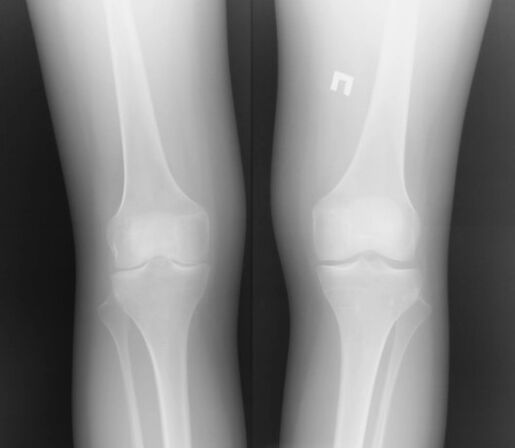
Häufiger beginnt die Arthrose des Kniegelenks mit der internen (medialen) Abteilung.
Das Röntgenbild des Kniegelenks, der durch Arthrose von innen betroffen ist. Der blaue Pfeil markierte den äußeren Abschnitt der Verbindung und die Orange - das Innere der Verbindung. Achten Sie darauf, wie bereits die Lücke zwischen den Knochen von innen ist: Der Knorpel ist auf dem Röntgenbild nicht sichtbar, und diese Lücke bedeutet Knorpel. In diesem Fall gibt es praktisch keinen Knorpel auf der Innenseite des Kniegelenks und der Knochen ist bereits auf dem Knochen gerieben.
Mit allmählichem Abrieb von Knorpel aus der Innenseite des Kniegelenks beginnt sich das Bein zu beugen. Da Arthrose häufig beide Kniegelenke beeinflusst, dh sie ist bilateral, beide Beine werden verdreht und eine O-förmige Fußverformung auftritt (Variordeformation).
Less frequently (in about 10% of the cases) the external parts of the connection are influenced by arthrosis, and in this case the x-shaped deformation (valgus) begins.
Of course, the load of internal (with O-shaped) or external (with x-shaped) deformation variants increases even more, and the osteoarthritis naturally becomes faster and irrevocable.Section, but also between the knee switch (patella) and the internal furrow of the femur.This option is referred to as patello-phomoral arthrosis and is usually based on the
inclination, subluxation of a pattern, lateral hyperpression syndrome to which a separate article on our website or afterwards is dedicated fractures of the patella , through which you can also read in a separate article. Secondary arthrosis of the knee joint
The arthrosis of the knee joint can also develop due to specific causes, in this case arthrosis is called secondary.Now we will briefly talk about the options for secondary arthrosis.
Post -traumatic arthrosis of the knee joint.
The violations of the knee joint, of course, do not add a health joint, and almost all of them increase the risk of arthrosis. One of the most common injuries to the knee joint are the break of the Meniscis, which is dedicated to a separate article on our website.Unfortunately, every person with the gap of meniscus ever had the likelihood of ever developing osteoarthritis.If a media (inner) meniscus is damaged, arthrosis develops inside the knee joint.And accordingly, osteoarthritis develops in the outer joint of the joint when the outer meniscus bursts.Note that the break of the meniscus does not always lead to osteoarthritis, the likelihood of its development.The more the meniscus is damaged, the higher the arthrosis risk.
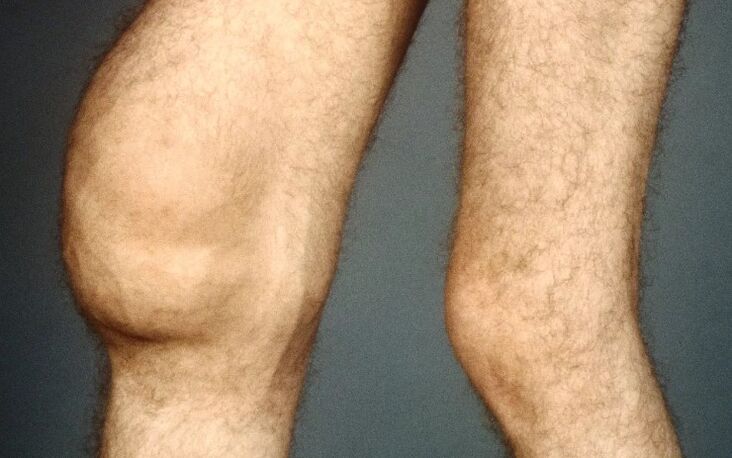
Another reason for the development of the arthrosis of the knee joint are breaking of the ligaments, for example a break in the front cruciate ligament.As a result of the volume of the tape in the joint, instability can appear, which of course leads to damage to the cartilage and the development of osteoarthritis.Of course, the cartilage damage depends on the degree of instability that can be different.
A much serious injury to the knee joint is a fracture of the tibis of the tibia or the fracture of the thigh condylus If the fracture line comes into the joint surface, such fracture is described as intra -articular.Almost every intra -karticular fracture is accompanied by a shift in fragments, and thus the shape of the joint surfaces changes.The step, which appears as a result of the shift, inevitably leads to a progressive destruction of cartilage and the occurrence of osteoarthritis.The heavier a fracture, the greater the cartilage, the greater the intra -articular fracture of the fragments and the risk of osteoarthritis is higher.According to the heavy, multicolored fractures of the Tibia condyles, arthrosis develops in almost 100% of cases despite the perfectly carried out osteosynthesis surgery (elimination of bone fragments and fastening with screws, plates, etc.).

















































